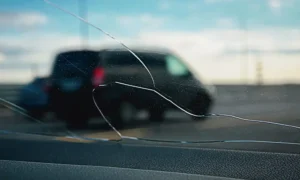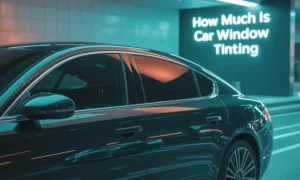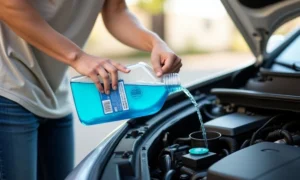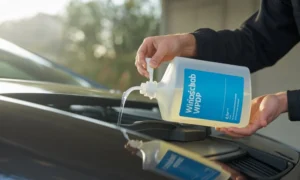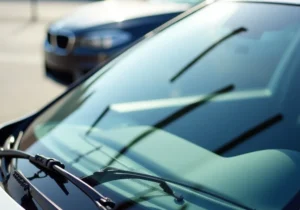When considering automotive features, it’s essential to grasp the disparities between a moonroof and a sunroof to make well-informed choices. A moonroof typically consists of a glass or transparent panel that can be opened or tilted, allowing sunlight and fresh air into the vehicle cabin. Conversely, a sunroof, similar in function, can feature either an opaque or transparent panel, operable manually or electronically, to admit sunlight into the car.
Understanding the Moonroof vs Sunroof Difference

Definition and Characteristics of Moonroof:
A moonroof is a type of automotive roof feature that consists of a panel made of glass or transparent material, which can be opened or closed to allow fresh air and light into the vehicle cabin. Unlike traditional sunroofs, moonroofs are usually larger and extend beyond the rear roofline of the vehicle, offering a wider opening and a more panoramic view of the sky. Moonroofs typically include an integrated sliding or tilting mechanism controlled by the driver or passengers to adjust the amount of sunlight and airflow entering the vehicle.
Characteristics of Moonroof:
Glass Panel: Moonroofs are typically constructed with a single large glass panel, offering a clear view of the sky above.
Size: Moonroofs tend to be larger than traditional sunroofs, extending over a significant portion of the vehicle’s roof.
Panoramic View: Due to their larger size, moonroofs provide a panoramic view of the sky and surroundings, enhancing the driving experience.
Integrated Mechanism: Moonroofs feature an integrated sliding or tilting mechanism, allowing users to control the opening and closing of the panel.
Interior Shade: Many modern moonroofs come equipped with an interior shade or cover that can be drawn to block out sunlight and provide privacy when desired.
Definition and Characteristics of Sunroof:
A sunroof is a roof opening in an automobile that allows light and air into the cabin. It can be made of glass or metal and may or may not be operable. Sunroofs come in various designs, including pop-up, sliding, and panoramic styles, and can be manually operated or powered by an electric motor. Unlike moonroofs, which are typically larger and extend beyond the rear roofline, sunroofs are often smaller and integrated into the existing roof structure of the vehicle.
Characteristics of Sunroof:
Variability: Sunroofs come in different styles, including pop-up, sliding, and panoramic, offering varying degrees of openness and visibility.
Material: Sunroofs can be made of glass or metal, depending on the design and manufacturer preferences.
Operation: Sunroofs may be manually operated or powered by an electric motor, allowing users to open or close them with ease.
Size: Sunroofs are typically smaller than moonroofs and may cover only a portion of the vehicle’s roof.
Integration: Sunroofs are often integrated into the existing roof structure of the vehicle, providing a seamless appearance when closed.
Key Distinctions Between Moonroof and Sunroof:
Size and Coverage:
- Moonroofs are generally larger and extend beyond the rear roofline, offering a panoramic view of the sky and surroundings.
- Sunroofs are typically smaller and may cover only a portion of the vehicle’s roof, providing limited visibility.
Design and Construction:
- Moonroofs feature a single large glass panel and often include an integrated sliding or tilting mechanism for opening and closing.
- Sunroofs come in various styles and materials, including glass or metal, and may be manually operated or powered by an electric motor.
Functionality:
- Moonroofs prioritize providing a wide opening and panoramic view, enhancing the driving experience with ample natural light and airflow.
- Sunroofs serve a similar purpose but may offer less visibility and openness compared to moonroofs, depending on the design and size.
Integration and Appearance:
- Moonroofs typically extend beyond the roofline and may alter the vehicle’s appearance, providing a distinctive feature.
- Sunroofs are often integrated into the existing roof structure, maintaining a sleek and seamless appearance when closed.
Pros and Cons Comparison
Advantages of Moonroofs:
Enhanced aesthetic appeal: Moonroofs add a sleek and modern look to the vehicle’s design, enhancing its overall appearance.
Increased natural light: Moonroofs allow more natural light into the vehicle’s interior, creating a brighter and more open atmosphere.
Improved ventilation: Moonroofs can be opened partially or fully, allowing fresh air to circulate inside the car, which can be refreshing during drives.
Enjoyment of the outdoors: With a moonroof, passengers can experience a sense of connection with the outside environment, enjoying views of the sky, stars, and scenery.
Potential increase in resale value: Vehicles equipped with moonroofs may have higher resale value due to the added features and appeal they offer.
Disadvantages of Moonroofs:
Potential for leaks: Improper installation or maintenance of moonroofs can lead to leaks, causing water damage to the vehicle’s interior.
Risk of sun exposure: Excessive exposure to sunlight through a moonroof can lead to increased UV radiation exposure and potential sunburn for passengers.
Noise and wind intrusion: Moonroofs, when open, may increase noise and wind intrusion into the vehicle, affecting the comfort of passengers, especially at higher speeds.
Limited headroom: The installation of a moonroof may reduce headroom for passengers, particularly in smaller vehicles with limited space.
Advantages of Sunroofs:
Similar aesthetic appeal: Sunroofs also enhance the visual appeal of the vehicle, providing a stylish and modern look.
Natural light and warmth: Like moonroofs, sunroofs allow natural light to enter the vehicle, creating a bright and inviting interior. Additionally, they can help warm up the interior on cooler days.
Improved ventilation: Sunroofs offer the same ventilation benefits as moonroofs, allowing for fresh air circulation while driving.
Customization options: Sunroofs come in various types, including pop-up, tilt-and-slide, and panoramic, providing consumers with options to suit their preferences.
Potential resale value boost: Vehicles equipped with sunroofs may also see an increase in resale value due to the added features and appeal they provide.
Disadvantages of Sunroofs:
Potential for leaks: Sunroofs, like moonroofs, can also be prone to leaks if not properly installed or maintained, leading to water damage.
Risk of sunburn: Similar to moonroofs, prolonged exposure to sunlight through a sunroof can increase the risk of sunburn for passengers.
Noise and wind intrusion: Sunroofs may also contribute to increased noise and wind intrusion into the vehicle when open, affecting passenger comfort.
Structural integrity: Adding a sunroof to a vehicle can compromise its structural integrity, potentially impacting safety in the event of a rollover or collision.
Which is Better: Moonroof or Sunroof?

When deciding between a moonroof and a sunroof, several factors should be considered to make an informed decision that aligns with personal preferences and lifestyle while also considering practicality and functionality.
Factors to Consider:
Cost: Moonroofs tend to be more expensive due to their larger size and added features like tinting. Sunroofs may be more affordable but could lack certain features.
Size and Design: Moonroofs typically offer a larger opening, providing a more expansive view of the sky. Sunroofs may be smaller and more traditional in design.
Ventilation and Airflow: Both moonroofs and sunroofs can provide ventilation and airflow, but moonroofs typically offer a larger opening, allowing for more air circulation.
Tinting and UV Protection: Some moonroofs come with built-in tinting and UV protection, which can be beneficial for blocking harmful rays and reducing glare.
Maintenance and Repairs: Consider the maintenance requirements and potential repair costs associated with each option.
Personal Preferences and Lifestyle:
Driving Environment: Consider your typical driving environment and climate. If you live in a sunny area, you may prefer a moonroof with tinting for added protection against glare and heat.
Usage Frequency: Think about how often you’ll use the roof opening. If you enjoy the open-air feeling frequently, a larger moonroof might be more suitable.
Aesthetics: Your aesthetic preferences and the overall look of your vehicle may influence your decision.
Practicality and Functionality:
Vehicle Type: Consider the type of vehicle you have and how a moonroof or sunroof may affect its aerodynamics, fuel efficiency, and structural integrity.
Safety Features: Some moonroofs come equipped with safety features like auto-closure during rain or rollover protection. Evaluate these features based on your priorities.
Resale Value: Research how the presence of a moonroof or sunroof may impact the resale value of your vehicle.
Making an Informed Decision:
Research and Test Drive: Research different makes and models that offer moonroofs or sunroofs, and test drive vehicles to experience firsthand how each option feels.
Consultation: Consult with automotive experts or dealerships for insights and recommendations based on your specific needs and preferences. If you want professional guidance then Reliable Auto Glass is best in business.
Consider Trade-Offs: Assess the trade-offs associated with each option and determine which features are most important to you.
Ultimately, the decision between a moonroof and sunroof depends on your individual preferences, lifestyle, and practical considerations. Take your time to weigh the pros and cons of each option before making a final decision.
Conclusion
The debate between moonroofs vs sunroofs hinges on subtle yet significant distinctions. While the terms are often used interchangeably, they refer to different types of roof openings in vehicles. A moonroof typically refers to a transparent or opaque panel that can be tilted or fully opened to allow light and air into the cabin, providing a panoramic view of the sky. On the other hand, a sunroof traditionally refers to a solid panel that can be manually or electronically retracted to expose the sky above. Feel free to contact us for any type of services or query related to moonroof vs sunroof.
FAQs
What Is The Difference Between A Moonroof And A Sunroof?
A sunroof typically refers to any panel in the roof of a car that can be opened to let in light and air. A moonroof, on the other hand, is a type of sunroof that usually consists of a tinted glass panel that can either slide open or tilt upwards.
Are Moonroof And Sunroof Terms Interchangeable?
While they are often used interchangeably, there is a subtle difference. Sunroof is a broader term that encompasses various types of roof openings, including moonroofs, which specifically refer to glass panels.
What Are The Benefits Of Having A Moonroof Or Sunroof In A Vehicle?
Moonroofs and sunroofs add to the aesthetic appeal of a vehicle, providing a sense of openness and spaciousness to the interior. They also allow natural light and fresh air into the cabin, enhancing the driving experience.
Are There Any Drawbacks To Having A Moonroof Or Sunroof?
One potential drawback is that moonroofs and sunroofs can increase wind noise at higher speeds, especially when fully open. Additionally, they may add weight to the vehicle and can be more prone to leaks or damage compared to a solid roof.
Can Moonroofs Or Sunroofs Be Tinted For Privacy Or Sun Protection?
Yes, many moonroofs and sunroofs come with built-in tinting options to provide privacy for occupants and to reduce the amount of sunlight entering the vehicle, thereby minimizing glare and heat buildup.
Do Moonroofs Or Sunroofs Affect The Structural Integrity Of The Vehicle?
When properly installed by the manufacturer, moonroofs and sunroofs should not compromise the structural integrity of the vehicle. However, it’s essential to ensure that they are well-maintained to prevent leaks or other issues that could affect the car’s structure over time.



